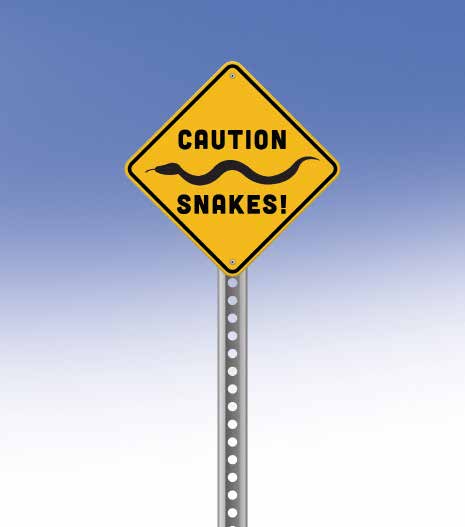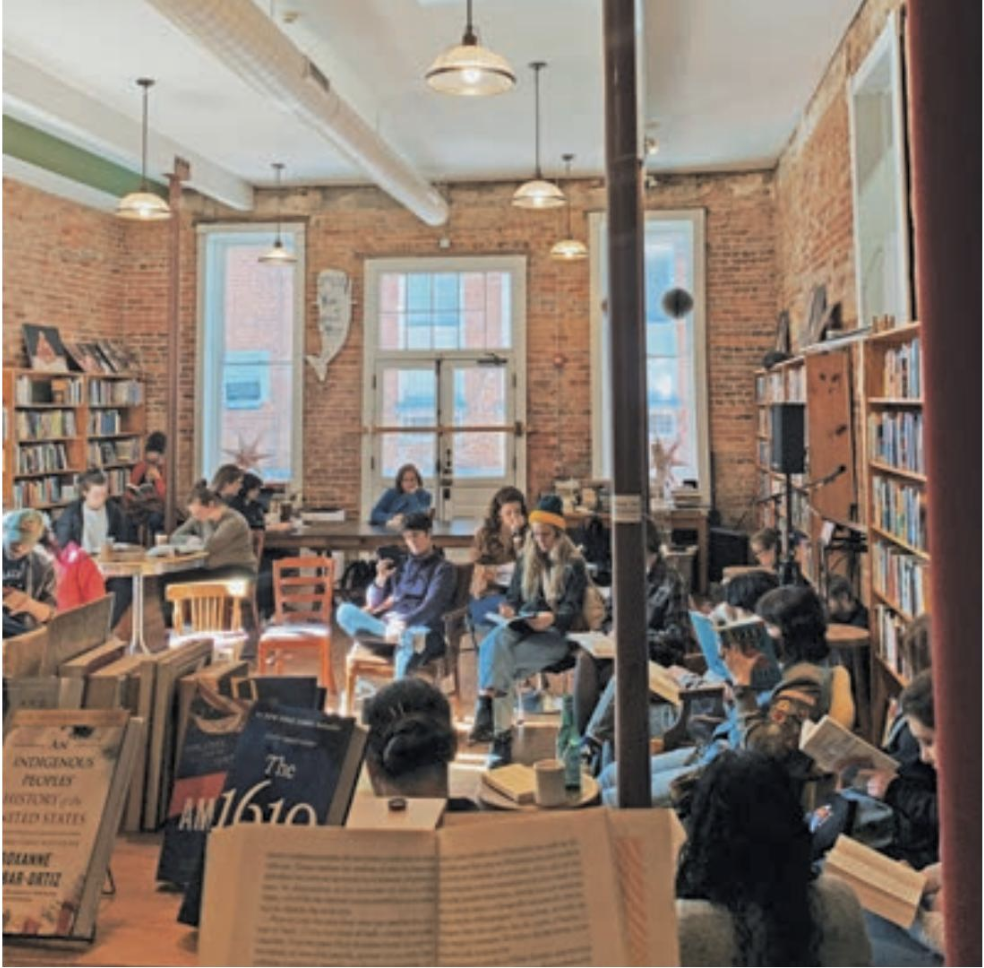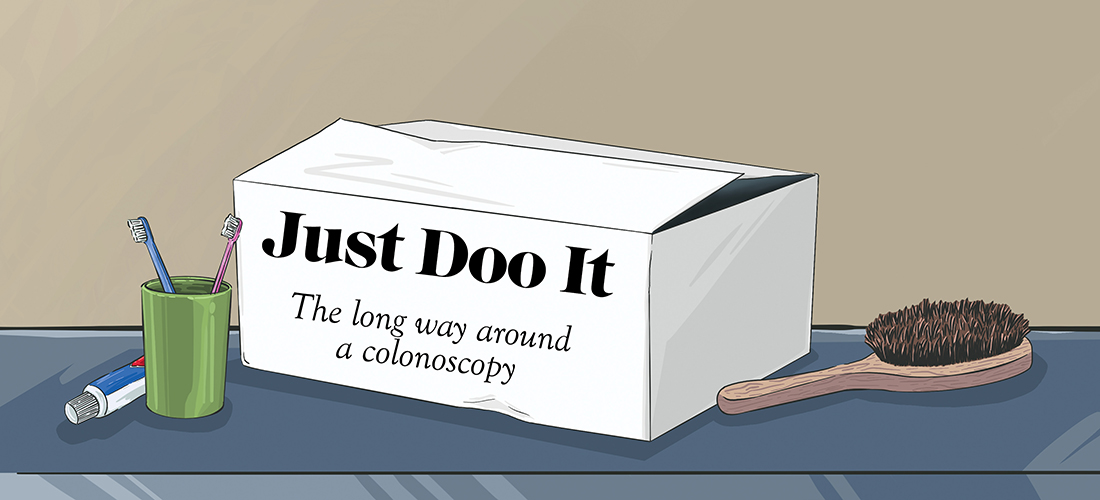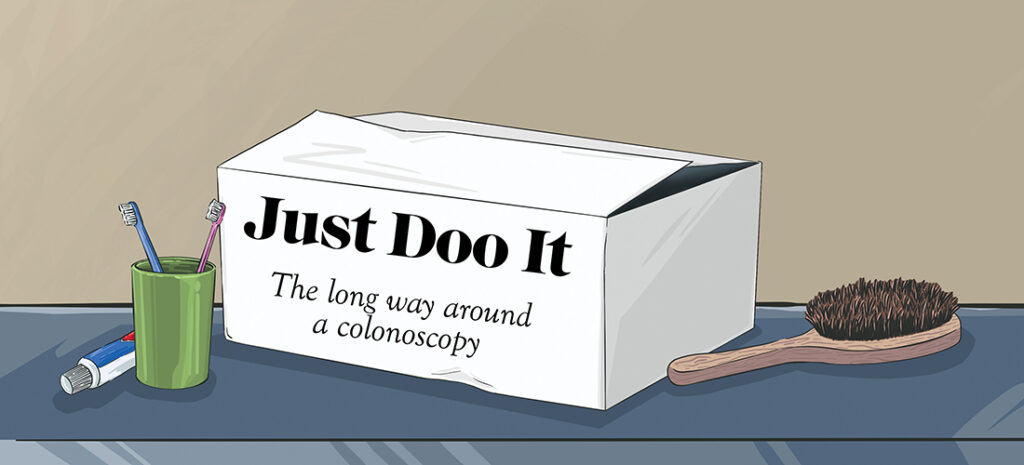Life’s Funny
LIFE'S FUNNY

Saints Alive
Valentine, Patrick, Nicholas and Fanourios. Who are these guys anyway?
By Maria Johnson
I was so delighted by the earrings — a pair of verdigris dogs with copper ears as bright as new pennies — that I had to try them on right then and there, in the backseat of my husband’s car. My older son’s partner, Tina, had just surprised me with them, following a family ramble through a row of seaside gift shops.
She and I have a custom of giving each other earrings, and she’d clearly hit a home run with the canines she’d just sniffed out.
I plucked out the faux-diamond studs I was wearing and carefully extracted the pups from their plasticized card. I hooked one hound to my left ear and was fiddling with my right lobe when the second pup slipped from hand.
I heard it hit something hard — the seatbelt buckle? — on the way down. Oops.
I expected to see the stray lying on the seat beside me.
No dice. No dog.
I unsnapped the seat belt and felt around for a metallic bump underneath me.
I bent double and pawed at the floor mat.
Tina, too, searched for the hound that had somehow slipped away in the space between us.
Minutes later, when we stopped at a landmark lighthouse, I stepped out of the car slowly, monitoring for anything that might fall from the folds of my T-shirt or shorts.
Knowing that wayward earrings can hang up in hair, snag on necklines or fall down shirts, I ruffled my own fur, patted myself down and snapped my sports bra, hoping to dislodge half of the gift.
I looked down my own shirt, disappointed to see that nothing (else) had fallen.
Meanwhile, the four scientists in the car — that would be everyone but me — converged at the seat where the lost dog was last seen. They postulated that the hound had taken a one-in-a-million dive into a crevice, or bounced at a weird angle and landed somewhere unexpected. They slid their hands between cushions, into map pockets, under mats, around seat tracks and anchors.
They could not prove their hypotheses that day. Or the day after. Or the day after that, when we meticulously vacuumed the car’s interior while listening for the rattle of success.
Alas, there was no need to pick through the dust cup.
I was deeply bothered by this loss, not just because it rendered the gift unwearable. The second earring was somewhere. It didn’t vanish.
And yet it had disappeared, to our senses at least.
Desperate, I called on heavenly help from Saint Fanourios, the Greek Orthodox saint who helps people find what is lost.
When I was growing up, my Hellenic dad often appealed to “Agios Fanourios,” which he pronounced in his native tongue as “eye-oos fan-NOO-rios” with an “r” that rolled like the Aegean Sea.
In the days before AirTags and GPS, Fanourios dropped a pin on missing objects and guided us to them by process of elimination.
He specialized in keys, pointing the way to fobs that were tucked into pockets, wedged between cushions or lodged between furniture and walls.
Usually, we found what we were looking for. Occasionally, we did not.
At these times, my dad offered a dose of common sense.
Ask Fanourios to find a necklace lost while body-surfing?
“C’mon now, honey,” Daddy would say. “Don’t be ridiculous. He’s just a saint. Even he has his limits.”
Also Fanourios did not, according to my dad, work cases involving stolen property. If someone swiped your basketball, it wasn’t lost; it was stolen. Fanourios was an intercessor, not a cop.
He was just a saint, a person who’d done some amazing things but was a person all the same.
Recently, I was thinking about my dad — who died several years ago — on his name day, December 6, the day that Greeks celebrate the feast of St. Nicholas. I searched online for a Saint Nick bio, curious about who he was before he became a saint and the forerunner of our very own Westernized Santa Claus.
Turns out, the original Nick was a bishop who, among other things, gave dowries to the father of three poor girls to save them from lives as prostitutes. So, you know, putting patriarchy aside for a minute, good on him.
Also, he is said to have revived three dismembered young people whose remains were hidden in a pickling barrel, which is disturbing on many levels, but I suppose still lands in the “plus” column.
Also, Nick might have slugged a heretic at a church meeting once. So there’s that.
For the sake of comparison, I snooped on a few other saints.
The soon-to-be celebrated St. Valentine, the patron saint of lovers, was a lawbreaker, said to have defied Roman Emperor Claudius by marrying couples so that the men would not be drafted into the military.
St. Patrick, in whose name we drink green beer and pinch people who aren’t wearing green — as if both of those behaviors are normal — was an English evangelist who converted lots of of Irish people to Christianity, but, heck, he wasn’t even a real saint. He was never canonized. And he never drove snakes from Ireland. The Ice Age, which snapped the chilly green isle off the continent, made it a no-slither zone for a long time.
And St. Fanourios? Very little is known about him, other than the usual saintly stuff: He spread the gospel, performed miracles and suffered on account of his beliefs. He was tortured and very likely died a gruesome death. His reputation for revealing lost items probably came because a pristine icon of him was unearthed from church ruins on the Greek island of Rhodes during Muslim occupation around the year 1400.
No wonder my earring was still lost.
My dad was right. These guys were “just” saints, not wizards (pickling barrel story notwithstanding).
Still, that doesn’t mean there isn’t some magic involved in appealing to them, letting go of a problem, letting your mind relax and coming back to it later.
I’m happy to report my missing dog was found. Sort of.
With my husband’s help, I Google-searched an image of the surviving earring, and up popped a boutique that sells identical litter mates.
As I write this, a new pair of hounds is bounding my way.
I can hear my pops now, giving Fanourios credit for his guidance and for keeping up with the times.
“Look, honey, he never said where you’d find it.”












